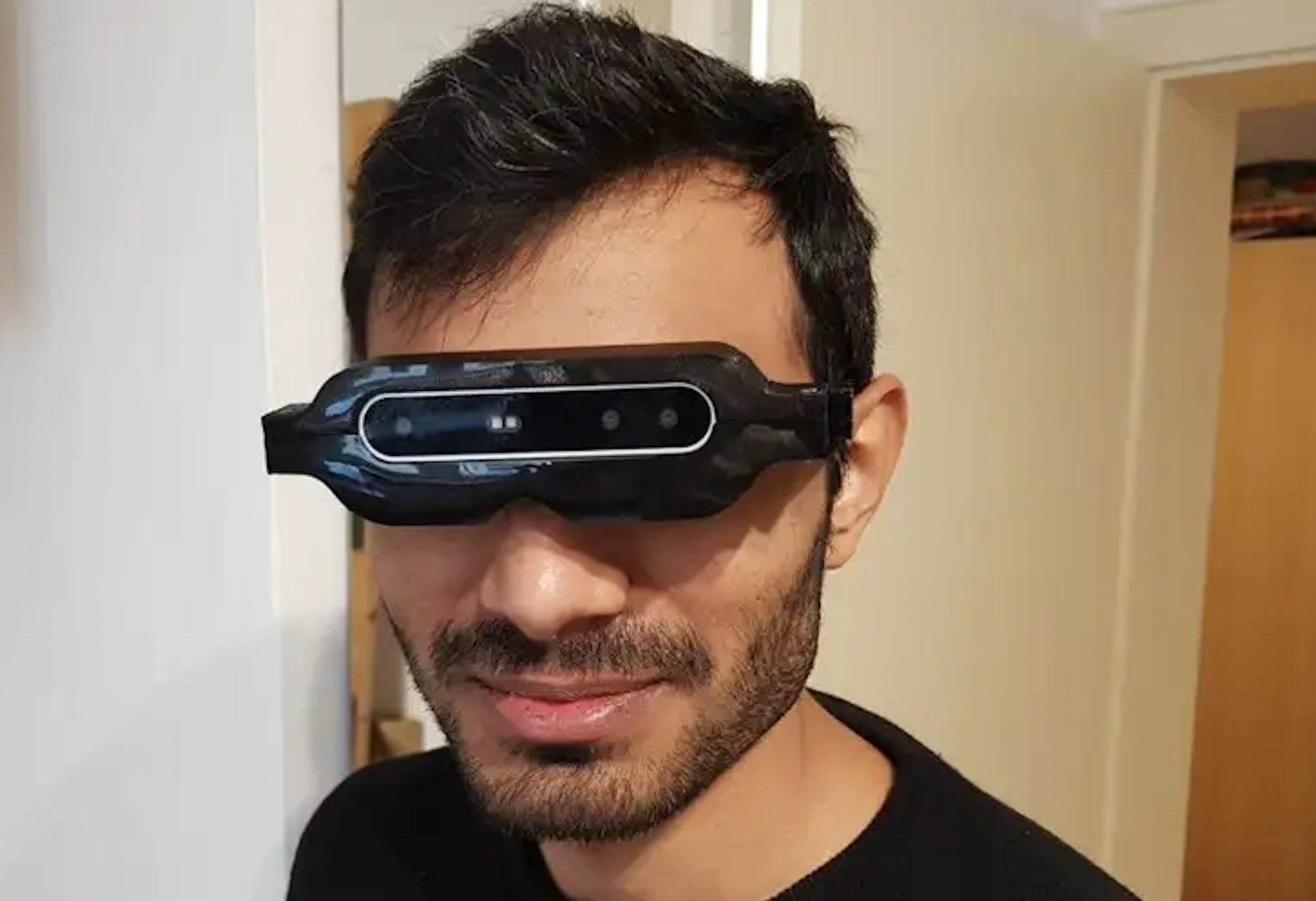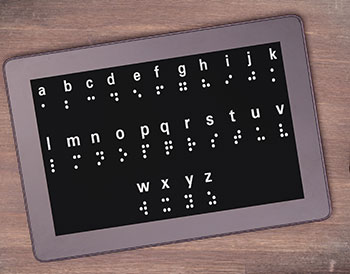Empowering Independence With Assistive Technology for the Blind
The combination of assistive modern technology into the lives of individuals with visual problems stands for a considerable advancement in advertising freedom and self-sufficiency. From innovative display visitors to sophisticated smart walking sticks, these devices not just enhance everyday navigating and interaction yet likewise encourage individuals to engage meaningfully in numerous aspects of life. As we discover the myriad advantages and real-world applications of these modern technologies, it becomes important to take a look at the underlying elements that add to their efficiency and the capacity for future growths in this essential area.
Introduction of Assistive Technology

The development of assistive technology is grounded in principles of inclusivity and empowerment. Developments in software, equipment, and sensory enhancements offer customers with alternatives customized to their details needs. From display viewers that transform text to speech, to responsive gadgets that convey information via touch, these tools change the method individuals involve with their environments.
In addition to sensible applications, assistive modern technology cultivates greater social inclusion and engagement in numerous fields, consisting of education and work (Speech-to-text devices for low vision). As r & d proceed to develop, the potential for assistive innovation to even more enhance the lives of visually impaired people stays promising, leading the way for an extra equitable culture where everyone can prosper
Sorts Of Assistive Devices
A range of assistive devices have actually emerged to sustain individuals with visual problems, each developed to fulfill details needs and improve day-to-day functioning. These devices vary from low-tech solutions to sophisticated technologies, offering varied options for customers.
Low-tech devices include magnifiers and large-print products that help in reading and writing. Braille devices, such as Braille slates and styluses, enable tactile reading and interaction. Positioning and mobility help, like white walking canes, help individuals navigate their environment safely.
On the higher end of the spectrum, electronic magnifying systems and display visitors supply considerable support. Digital magnifiers allow users to increase the size of message and images on displays, while display visitors convert electronic content right into manufactured speech, assisting in accessibility to details on smartphones and computer systems.
Smart device applications additionally play a crucial role, supplying attributes like message acknowledgment and navigation help. Wearable innovation, such as clever glasses furnished with increased reality, is arising as an encouraging tool to improve situational recognition.
Advantages of Assistive Technology
The integration of assistive technology significantly boosts the top quality of life for people round glasses for men with aesthetic problems. These modern technologies equip individuals by promoting freedom, allowing them to browse their atmospheres better and carry out everyday jobs with better convenience. Display visitors and magnifying software program enable people to access digital info, cultivating professional and instructional opportunities that might have formerly been out of reach.
Additionally, assistive devices such as clever walking sticks and general practitioners applications give real-time navigating help, enhancing wheelchair and safety. This increased freedom not just enhances self-esteem yet also urges social interaction, permitting individuals to take part more totally in their communities.
Assistive innovation additionally promotes interaction, helping individuals get in touch with others with voice acknowledgment and text-to-speech applications. This ability is important for maintaining relationships and accessing vital details.
In addition, the personalization options available with numerous assistive modern emergency optometrist technologies guarantee that individuals can tailor tools to their specific requirements, even more boosting use and effectiveness. Generally, the benefits of assistive innovation for people with visual problems are profound, promoting a much more inclusive culture where everyone can pursue their objectives and aspirations.
Instance Researches and Success Stories
Highlighting the transformative influence of assistive modern technology, various situation studies illustrate just how individuals with aesthetic disabilities have actually successfully integrated these devices into their day-to-days live. One engaging example includes a college trainee who utilized screen analysis software to browse online sources and scholastic materials effectively. This technology not just promoted her education and learning however also enhanced her self-confidence in participating in discussions and group tasks.
One more case research study includes a specialist who utilizes a smartphone application developed for navigating and things acknowledgment. By utilizing this application, he has regained freedom in both his personal and workplace, allowing him to commute individually and involve with associates better.
Additionally, a retired person shared her experience with braille e-readers, which allowed her to access a vast selection of literature and remain gotten in touch with her area with book clubs.
These success stories emphasize the vital role of assistive visit the website innovation in promoting freedom, improving top quality of life, and promoting social integration for individuals with visual problems (Voice-activated assistive devices). By embracing these ingenious devices, individuals can get over challenges and take possibilities that contribute to their individual and professional satisfaction

Future Patterns in Assistive Technology
Development in assistive technology is poised to redefine the landscape of support for people with aesthetic disabilities. Arising patterns highlight the combination of fabricated knowledge (AI) and equipment learning, which boost the capability of tools that help with navigation and info availability. For example, AI-driven applications are now efficient in analyzing aesthetic data in real-time, enabling users to involve with their atmosphere much more independently.
Additionally, the advancement of wearable technology is progressing quickly. Smart glasses geared up with increased truth (AR) can provide audio descriptions of surroundings, transforming just how customers interact with public rooms. These devices not just promote freedom but additionally foster social inclusion.
In Addition, the Net of Things (IoT) is making homes smarter, enabling smooth connection in between daily devices and assistive devices. This connection encourages customers by making it possible for computerized feedbacks and voice-activated controls customized to specific demands.
Conclusion
To conclude, assistive technology plays an essential duty in encouraging individuals with visual problems by enhancing their self-reliance and interaction with their environments. The diverse variety of tools and applications available not just facilitates navigating and communication but likewise promotes social combination and possibilities for expert and individual development. As advancements continue in this field, the potential for enhancing the lifestyle for those with visual impairments will expand, promoting higher freedom and empowerment.
